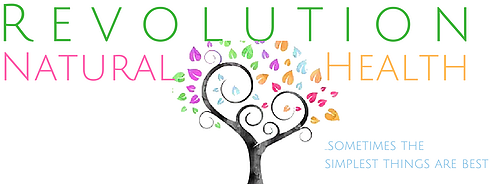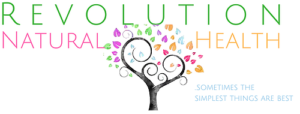Sunscreen, the great conundrum for those who have begun to look at the ingredients on their bottles of “cancer-preventing” chemicals. Would you rather get cancer from sunscreen or the sun you are so desperately trying to avoid? Many people think these are the only two options when in reality there are a host of natural sunscreen alternatives that protect you from dangerous UV rays without poisoning your body.
The truth about sunscreen
The sun isn’t always bad
Contrary to popular opinion, the sun isn’t out to get you. In fact, according to studies, the real risks and benefits of moderate sun exposure are incredibly complicated. Most researchers agree, however, that at least 20 minutes of sun exposure every day is essential for your body to get the Vitamin D it needs to function. Now, this doesn’t mean you should sit out on your patio or at the pool in a bathing suit with no sun protection whatsoever merely to “soak up some rays,” as excessive sun exposure can still be dangerous, hence burned skin and sunspots. The key is balance and moderation and limiting the amount of your body that is unprotected from harmful UV rays.
It is toxic
Traditional sunscreen is full of toxic ingredients that actually do more harm than good and could be contributing to a number of serious health concerns including cancer and hormone disruption.
Oxybenzone: This organic compound is developed from a class of chemicals called benzophenones and is used in most sunblock products. It builds up in our bodies and the environment and has been linked to organ system toxicity, skin irritation, reproductive and developmental toxicity, hormone disruption, and cancer.
Octinoxate: This is often added to sunscreen because it dissolves easily in oil; however, it is merely a UV filter that protects from UVB rays and not UVA rays as well. Along with that “protection” comes the risk of hormone disruption, cancer, reproductive and developmental toxicity, and organ system toxicity as well.
Recent studies have shown that these chemicals enter your bloodstream after just one day of use. Is it worth it?
It is harmful to the environment
Not only is sunscreen dangerous to slather all over your body because of the health risks it poses to you, but it has also been proven to be a scourge on the ocean and marine life health, particularly coral reefs. Sunscreen pollution is now becoming a serious concern as researchers estimate that 5,000 metric tons of sunscreen wash off of swimmers each year into the ocean, causing coral bleaching, hampering coral growth, and altering coral DNA and reproduction.
Natural alternatives to sunscreen
Remember, none of these natural options will shield your body from hours of sunbathing. In fact, nothing will protect you if you are irresponsible about the amount of sun you get. However, these are viable, nontoxic ways to ensure that your time outdoors is healthy and beneficial rather than harmful.
Umbrellas exist for a reason
If you are at the pool or beach, or merely enjoying the afternoon in your backyard, it is time to take advantage of that umbrella. When you plan to sit somewhere in the hot sun for more than 20-30 minutes, you are putting yourself at risk for overexposure. Prop up the colorful umbrella and enjoy the shade while still enjoying your outdoor time.
Cover up
One of the easiest and most foolproof ways to ensure your skin is protected from the sun is to wear a lightweight layer of clothing that protects vulnerable spots such as your shoulders and back and chest. Of course, during the dog days of summer, no one wants to be covered head to toe, but it is possible to strategically plan your outfits so that you can minimize your risk. For instance, wear a UPF rash guard when swimming or snorkeling, or a t-shirt when exercising rather than a tank top.
This is especially important during peak sunburn hours of 10am-4pm.
Enjoy an antioxidant-rich diet
Consuming foods rich in antioxidants can help protect you from the inside out. Eat lots of fruits, leafy greens, and nuts that are high in Vitamins E and C to build up your natural defenses.
Utilize the power and fashion of hats
Yes, it is still possible to wear a hat and look stylish while doing it. Invest in a broad-brimmed hat that you can put on on whenever you’ll be baking in the sun. It is best to find a hat that covers your neck and ears along with your face as these are areas most susceptible to sunburn. However, a simple baseball hat is better than nothing.
Mineral sunscreens
Believe it or not, non-toxic, commercially available sunscreen does exist. This type of sunscreen is known as mineral or physical sunscreen and does not contain oxybenzone and octinoxate. Instead of relying on chemicals, it utilizes the protective properties in minerals such as zinc oxide and titanium dioxide to create a barrier against the sun. This barrier protects the skin from UVA and UVB rays without seeping into your bloodstream and poisoning your body and the environment.
Be sure you are not purchasing mineral sunscreens with harmful ingredients.
Oils
Red raspberry seed oil: SPF 28-50
Beneficial ingredients: Omega 3 and Omega 6 Fatty Acids,
Red raspberry seed oil is a wonder for the skin and is known for its ability to heal eczema and prevent rashes along with creating a lipid barrier that protects the skin from the sun. This is the best natural oil to use as it is one of the only ones that actually protects against UVA and UVB rays.
Coconut oil: SPF 10
Beneficial ingredients: Vitamin E, antioxidants
Coconut oil serves as a wonderful skin moisturizer since it creates a protective layer on the skin that locks in hydration. It is also high in antioxidants that prevent burning and oxidative damage.
Carrot seed oil: SPF 38-40
Beneficial ingredients: Beta carotene, Vitamin A, E, and pro-Vitamin A.
Carrot seed oil shields the skin from free radicals and moisturizes and replenishes dry, cracked skin. It also has antiseptic properties that speed healing of burns, wounds, and cuts and prevents infection.



